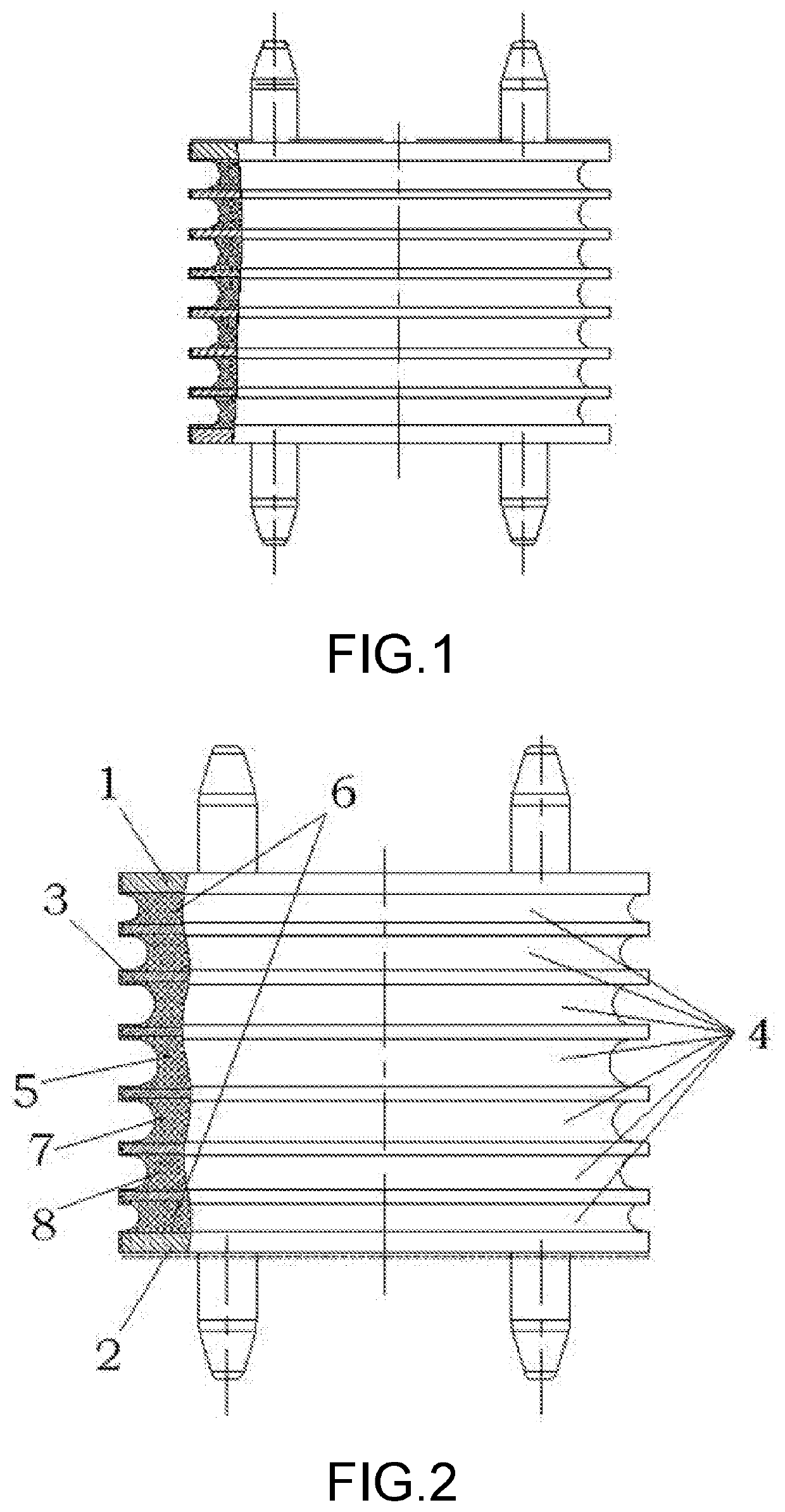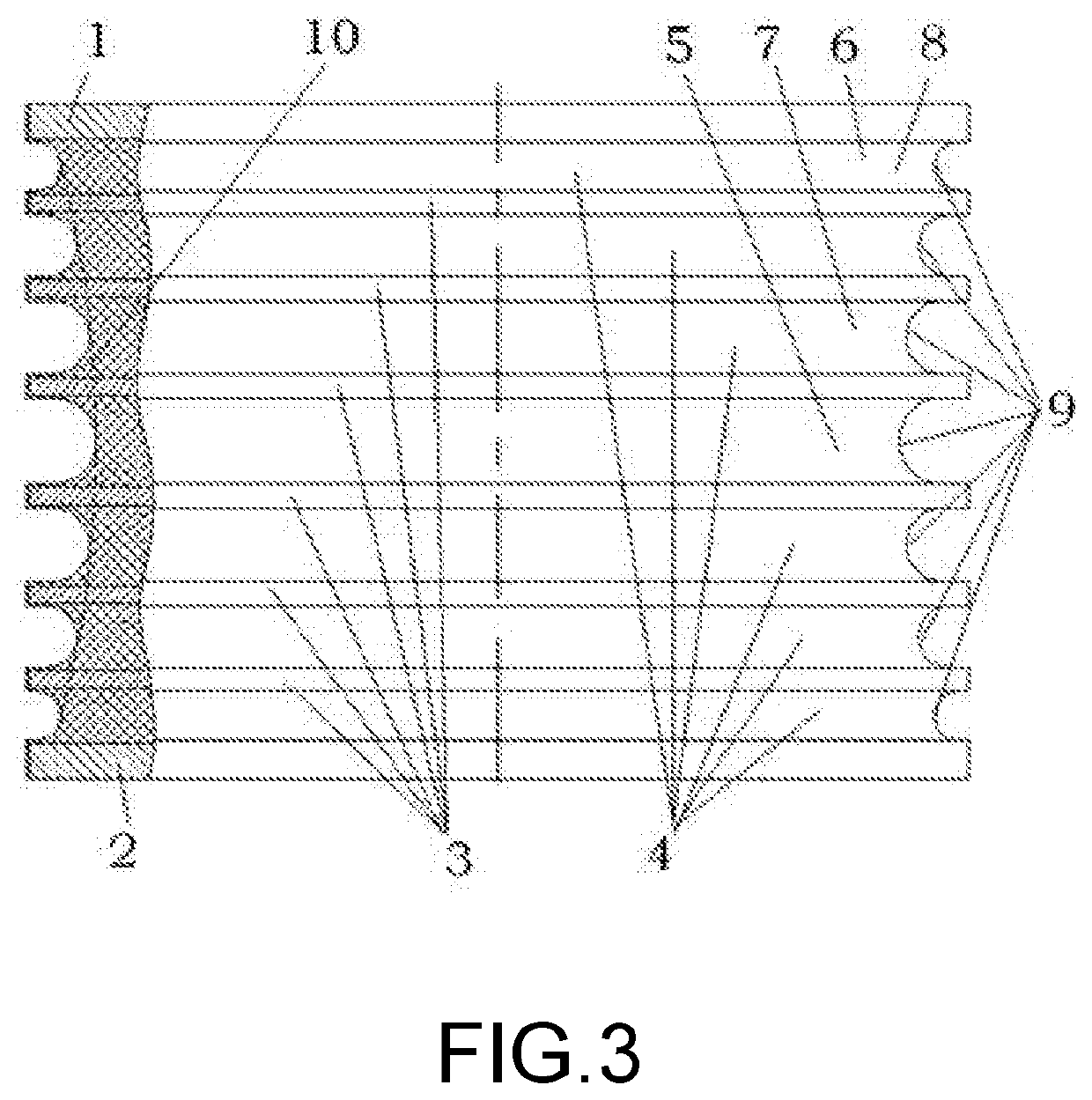Method for improving fatigue resistance performance of locomotive rubber-metal pad with variable diameter and locomotive rubber-metal pad
a technology of rubber-metal pads and locomotives, which is applied in the direction of springs, bogies, etc., can solve the problems of not improving the fatigue resistance performance of existing rubber-metal pads, easy to tear the rubber-metal layer, and easy to fatigue the rubber-metal layer, so as to improve the stress and strain of the layer, reduce the thickness of the end layer, and improve the effect of stress and strain
- Summary
- Abstract
- Description
- Claims
- Application Information
AI Technical Summary
Benefits of technology
Problems solved by technology
Method used
Image
Examples
embodiment 1
[0022]It can be seen from FIG. 2 and FIG. 3 that the present invention relates to a locomotive rubber-metal pad which includes an upper backing plate 1, a lower backing plate 2, metal partition plates 3 and rubber layers 4. The metal partition plates 3 and the rubber layers 4 are arranged between the upper backing plate 1 and the lower backing plate 2. The rubber layers 4 and the metal layers 3 are staggered to form a rubber-metal pad of rubber and metal with composite layers of rubber and metal. The thickness of the rubber layers 4 is variable and the diameter of the rubber layers 4 is also variable.
[0023]The rubber layer 4 uses a middle layer 5 as a reference layer, the middle layer 5 is thickest, the thickness of the rubber layers is gradually reduced from the middle layer 5 to the upper or lower side respectively, and the side or top or bottom rubber layer 6 is thinnest.
[0024]The thickness of the rubber layer is gradually reduced from the middle layer 5 to the upper or lower sid...
embodiment 2
[0026]The basic structure of embodiment 2 is the same as that of embodiment 1, and is only different in manufacturing modes. A locomotive rubber-metal pad includes an upper backing plate, a lower backing plate, metal partition plates and rubber layers. The metal partition plates and the rubber layers are arranged between the upper backing plate and the lower backing plate. The rubber layers and the metal layers are staggered to form a rubber-metal pad of rubber and metal with composite layers of rubber and metal, characterized in that the thickness of the rubber layers is variable and the diameter of the rubber layers is also variable.
[0027]Further, the rubber layer uses a middle layer as a reference layer, the middle layer is thickest, the thickness of the rubber layers is gradually reduced from the middle layer to the upper or lower side respectively, and the side or top or bottom rubber layer is thinnest.
[0028]Further, the thickness of the rubber layer is gradually reduced from t...
PUM
| Property | Measurement | Unit |
|---|---|---|
| shear displacement | aaaaa | aaaaa |
| fatigue resistance performance | aaaaa | aaaaa |
| fatigue resistance | aaaaa | aaaaa |
Abstract
Description
Claims
Application Information
 Login to View More
Login to View More - R&D
- Intellectual Property
- Life Sciences
- Materials
- Tech Scout
- Unparalleled Data Quality
- Higher Quality Content
- 60% Fewer Hallucinations
Browse by: Latest US Patents, China's latest patents, Technical Efficacy Thesaurus, Application Domain, Technology Topic, Popular Technical Reports.
© 2025 PatSnap. All rights reserved.Legal|Privacy policy|Modern Slavery Act Transparency Statement|Sitemap|About US| Contact US: help@patsnap.com


